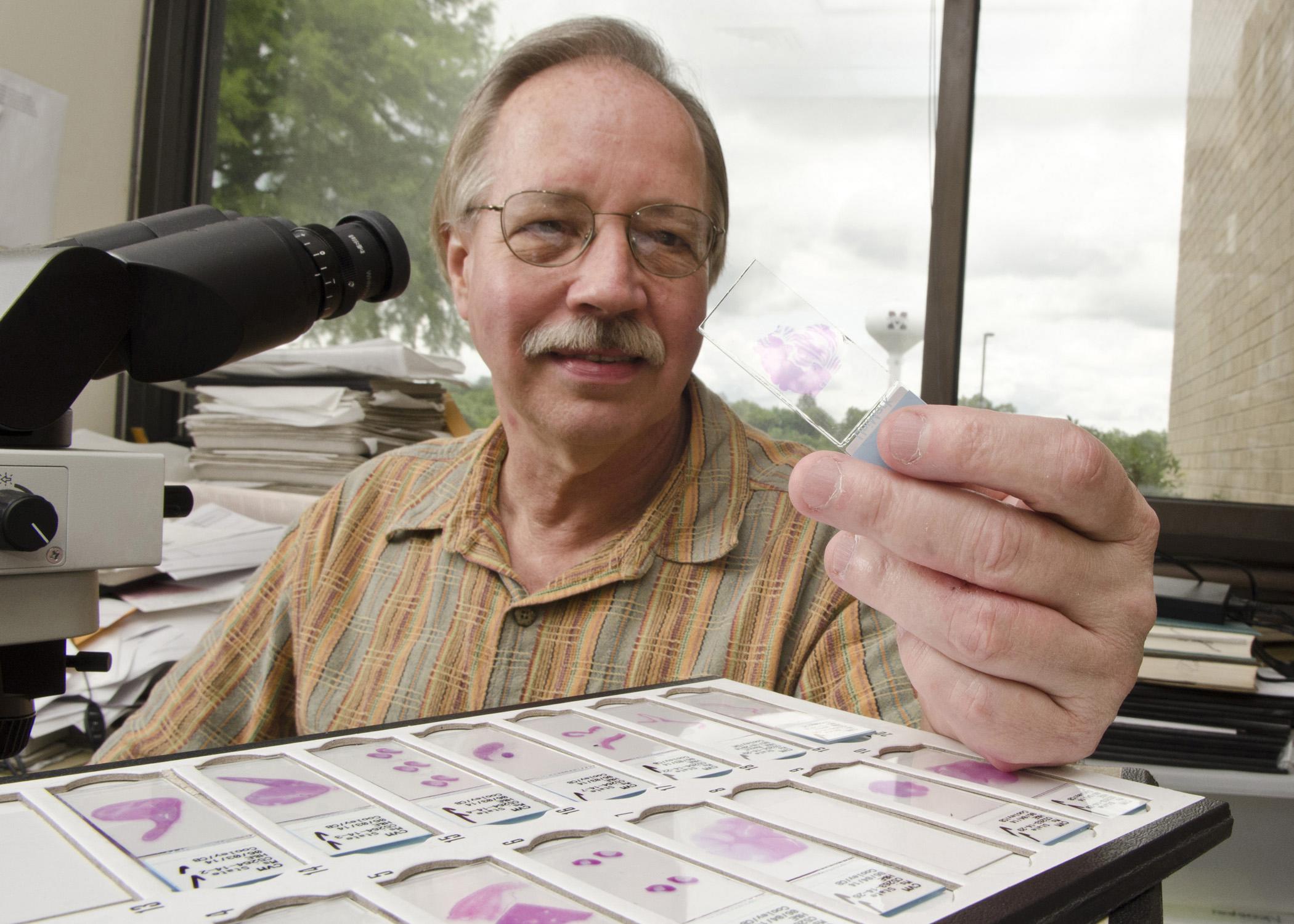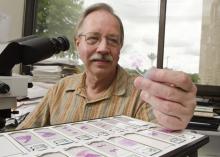Information Possibly Outdated
The information presented on this page was originally released on June 27, 2014. It may not be outdated, but please search our site for more current information. If you plan to quote or reference this information in a publication, please check with the Extension specialist or author before proceeding.
Diagnostic diligence finds new bovine virus in state
MISSISSIPPI STATE -- Professional inquiry and persistence recently resulted in the confirmation of a new cattle virus in Mississippi that previously had been identified only in California.
Dr. Jim Cooley, a veterinary pathologist and professor in the Mississippi State University College of Veterinary Medicine, worked with a colleague at the University of California-Davis to identify the neurologic disease that causes inflammation in the brains or spinal cords of affected cattle.
Cooley described the disease as a low-grade encephalitis and myelitis that seems to attack the neurons in the brainstem, cerebellum and spinal cord.
“A novel astrovirus has been confirmed as the cause of clinical neurologic disease in a 3-year-old Fleckvieh bull in Mississippi,” Cooley said.
Researchers suspect there are other cases based on microscopic examinations of diseased brain tissue samples from other cattle.
For years, veterinarians were aware of a persistent viral infection of the membranes surrounding the brain and spinal cord of cattle, but the virus was unidentified. The process to unravel this mystery began last May when Cooley and his team were presented with a diseased bull for necropsy, or animal autopsy.
The bull exhibited the symptoms that veterinarians had seen before, and Cooley’s team ran tests to rule out obvious causes for the condition that led to the animal’s death. At that point, they turned to a long list of other diagnostic tests.
“It became a diagnostic work-up to attempt identification of a specific agent that would account for the signs the bull exhibited,” Cooley said. “What we came up with was nothing, so I talked to people at several different schools and diagnostic labs for their input.”
He eventually spoke with Dr. Patty Pesavento at UC-Davis.
“She became convinced that the findings were too similar to ignore,” he said.
Using a proprietary and very sensitive in situ hybridization technique on the samples, Pesavento confirmed the presence of the novel bovine astrovirus. This case marked the first time the disease was confirmed outside California, and solved a particularly challenging case study Cooley undertook.
“We like to have a definitive explanation for unique findings in animals,” Cooley said. “We now know this is an RNA virus detected in the brainstem and spinal cord of affected animals.”
Much work remains to be done regarding this virus, including learning how it is transmitted. Identification was simply an early step in the scientific process.
Dr. Bill Epperson, head of the MSU College of Veterinary Medicine Department of Pathobiology and Population Medicine, said this case is an example of the type of work done at university diagnostic labs.
“Dr. Cooley was able to put together cases he was working on with recently published research results and identify a bovine disease’s first appearance in the state,” Epperson said. “Our job is to look for things that are perplexing and address problems that people in the state are experiencing.”
He praised Cooley’s “stick-to-it-iveness” and collaboration with researchers from other institutions.
“He went from the things we know it could be, and found nothing matched, until he was finally able to connect with some people who had some tools and were able to diagnose an unknown,” Epperson said. “That’s why it is important to maintain robust diagnostic services in our state.
“We need producers to work with their veterinarians when they have a problem with their animals, and we need the veterinarians to work with us when they are confronted by a new problem so we have the opportunity to diagnose new conditions,” he said.
Pesavento’s paper, “Divergent Astrovirus Associated with Neurologic Disease in Cattle,” appeared in the September 2013 journal Emerging Infectious Diseases.
Contact: Dr. Jim Cooley, 662-325-5751





